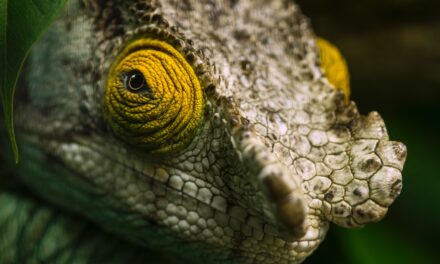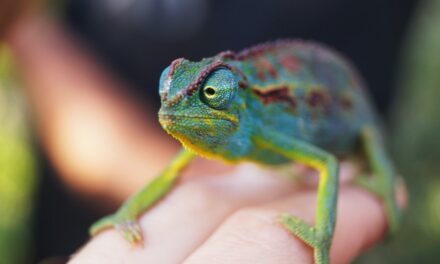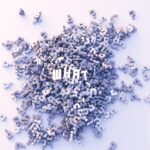Chameleons are fascinating creatures that have captured the attention and curiosity of people for centuries. These reptiles are known for their ability to change colors, their unique physical features, and their diverse diets. Chameleons belong to the family Chamaeleonidae, which includes over 200 different species. They are native to various parts of the world, including Africa, Madagascar, Europe, and Asia.
The history of chameleons dates back millions of years. Fossil evidence suggests that these reptiles have been around for at least 65 million years. They have evolved to adapt to their environments and have developed a range of physical characteristics that make them well-suited for survival. Chameleons come in a variety of shapes and sizes, with some species growing as small as an inch long, while others can reach lengths of up to two feet.
The Colorful World of Chameleons: How Do They Change Colors?
One of the most intriguing aspects of chameleons is their ability to change colors. This unique characteristic is due to specialized cells in their skin called chromatophores. These cells contain pigments that can expand or contract, allowing the chameleon to change its coloration.
There are several reasons why chameleons change colors. One reason is for camouflage. Chameleons can blend into their surroundings by changing their skin color to match the environment. This helps them hide from predators or sneak up on prey.
Another reason for color change is communication. Chameleons use their vibrant colors to communicate with other chameleons. Males often display bright colors to attract females during mating season, while females may change colors to signal aggression or submission.
Understanding the Diet of Chameleons: What Do They Eat?
Chameleons have a diverse diet that varies depending on their species and habitat. While some chameleons are strictly carnivorous, others are herbivorous or omnivorous. It is important for chameleon owners to understand the specific dietary needs of their pet in order to provide proper nutrition.
A balanced diet for chameleons typically consists of a variety of insects, such as crickets, mealworms, and waxworms. These insects provide essential nutrients, such as protein and vitamins, that are necessary for the chameleon’s overall health. It is important to gut-load the insects before feeding them to the chameleon, which involves feeding the insects a nutritious diet to ensure that they pass on those nutrients to the chameleon.
Carnivorous Chameleons: What Do They Prey On?
Carnivorous chameleons primarily feed on insects and small animals. Some common prey items for carnivorous chameleons include crickets, grasshoppers, flies, spiders, and small lizards. These chameleons have specialized tongues that they use to catch their prey. Their tongues are long and sticky, allowing them to quickly snatch insects from a distance.
In captivity, it is important to provide a varied diet for carnivorous chameleons. This can include a combination of live insects and commercially available insect powders or pellets. It is also important to dust the prey items with calcium and vitamin supplements to ensure that the chameleon is receiving all the necessary nutrients.
Herbivorous Chameleons: What Do They Eat for Nutrition?
Herbivorous chameleons primarily feed on plants and vegetables. Some common food items for herbivorous chameleons include leafy greens, fruits, flowers, and vegetables. These chameleons have specialized teeth and digestive systems that allow them to efficiently process plant matter.
In captivity, it is important to provide a variety of fresh and nutritious plant foods for herbivorous chameleons. This can include items such as kale, collard greens, dandelion greens, squash, and carrots. It is important to ensure that the plants are pesticide-free and thoroughly washed before feeding them to the chameleon.
Omnivorous Chameleons: What Foods Do They Prefer?
Omnivorous chameleons have a more varied diet that includes both plant matter and small animals. These chameleons may eat a combination of insects, fruits, vegetables, and even small vertebrates. Their diet can vary depending on their species and habitat.
In captivity, it is important to provide a balanced diet for omnivorous chameleons. This can include a combination of live insects, fruits, vegetables, and commercially available reptile diets. It is important to ensure that the chameleon is receiving all the necessary nutrients by providing a varied and nutritious diet.
The Importance of Water for Chameleons: How Do They Stay Hydrated?
Water is essential for the health and well-being of chameleons. In the wild, chameleons obtain water by licking dew or raindrops from leaves. They may also drink water from puddles or other sources of standing water.
In captivity, it is important to provide a source of water for chameleons. This can be done by misting the enclosure with water several times a day or by providing a dripper system that simulates rainfall. It is important to ensure that the water is clean and free from any contaminants.
Feeding Chameleons in Captivity: Tips and Tricks
Feeding chameleons in captivity requires careful attention to their dietary needs and feeding habits. Here are some tips and tricks to ensure that your chameleon receives proper nutrition:
1. Offer a variety of food: Chameleons thrive on a varied diet, so it is important to offer a variety of insects, plants, and vegetables. This will ensure that they receive all the necessary nutrients.
2. Gut-load insects: Before feeding insects to your chameleon, make sure to gut-load them with nutritious foods. This will ensure that the chameleon receives the maximum nutritional benefit from the insects.
3. Dust prey items with supplements: To ensure that your chameleon receives all the necessary vitamins and minerals, dust the prey items with calcium and vitamin supplements before feeding them to your chameleon.
4. Provide fresh water: Make sure to provide a source of clean, fresh water for your chameleon. This can be done by misting the enclosure or providing a dripper system.
Common Feeding Mistakes to Avoid When Keeping Chameleons
When it comes to feeding chameleons in captivity, there are some common mistakes that owners should avoid. These mistakes can have a negative impact on the chameleon’s health and well-being. Here are some common feeding mistakes to avoid:
1. Feeding inappropriate foods: It is important to feed chameleons foods that are appropriate for their species and dietary needs. Feeding them foods that are too large or too small can lead to digestive issues or malnutrition.
2. Overfeeding or underfeeding: Finding the right balance when it comes to feeding chameleons can be challenging. Overfeeding can lead to obesity and other health issues, while underfeeding can result in malnutrition and stunted growth.
3. Neglecting supplementation: Chameleons require specific vitamins and minerals to thrive. Neglecting to provide these supplements can lead to nutritional deficiencies and health problems.
4. Not providing enough water: Chameleons require access to clean, fresh water on a regular basis. Neglecting to provide water can lead to dehydration and other health issues.
The Fascinating World of Chameleons and Their Diverse Diets.
In conclusion, chameleons are truly fascinating creatures with diverse diets. Their ability to change colors, their unique physical features, and their specialized diets make them a captivating species to study and care for. Understanding the specific dietary needs of chameleons is crucial for their overall health and well-being. Whether they are carnivorous, herbivorous, or omnivorous, providing a balanced and varied diet is essential for their optimal health. By following proper feeding techniques and avoiding common mistakes, chameleon owners can ensure that their pets thrive in captivity.










Recent Comments